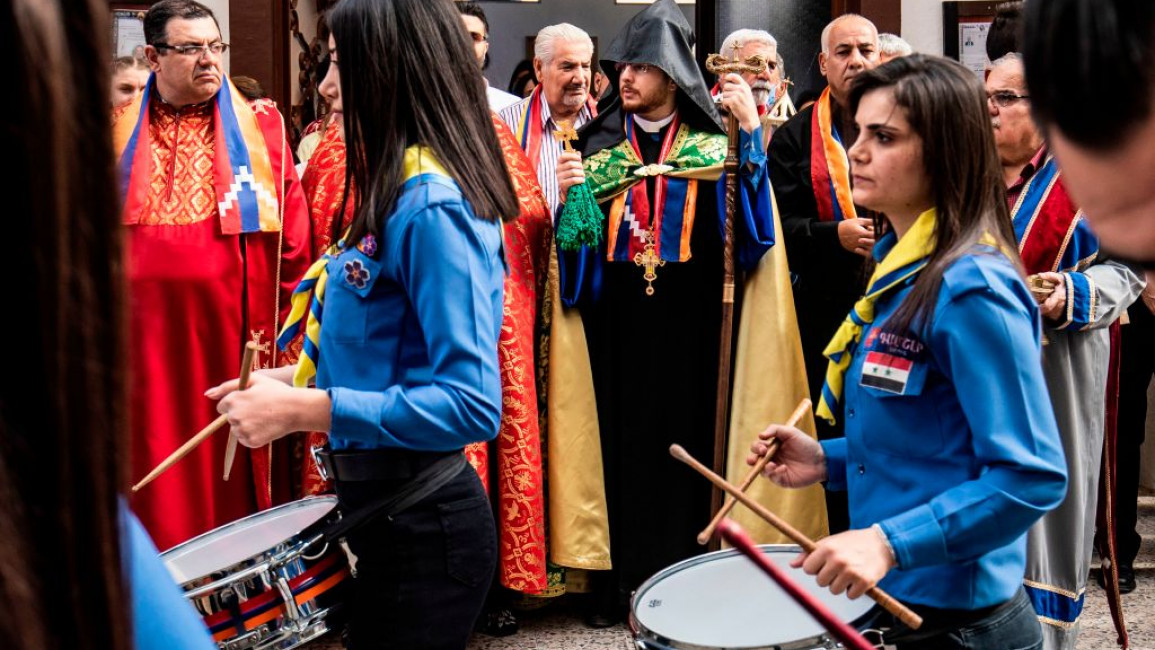Armenians in northeast Syria to start learning own language for first time in years
The first courses to train Armenian language teachers launched in the northeastern Syrian city of Hasakah on Sunday, local media reported.
The courses are organised by the Armenian Social Council, which was established two years ago in Hasakah to teach Armenian language, culture and history. The goal is to train local teachers to teach in Armenian, which will from next year become part of the school curriculum in areas controlled by the Autonomous Administration of North and East Syria (AANES).
“Syrian government prohibited teaching other languages in its curricula since 2011, therefore it is not surprising that teachers may face difficulties in receiving the language at first,” Armenian language teacher Lucien Ardemian told the local North Press Agency.
Syria's Armenian community was mostly formed between 1915 and 1920 by survivors of the 1915 genocide carried out by Turkey.
Around 30,000 ethnic Armenians are thought to remain in Syria, and an estimated 60,000 fled the country due to the war according to the Office of the Armenian High Commissioner for Diaspora Affairs. Other ethnic minorities include Kurds, Turkmen and Circassians.
Although Syria is religiously and ethnically diverse, Arabic-speaking Sunni Muslims make up the majority of its roughly 17 million population.
For decades, the Syrian state - ruled by the Arab nationalist Ba'ath Party since 1963 - refused to recognise the existence of non-Arab minorities, depriving hundreds of thousands of Syrian Kurds of citizenship.
Increasing the political and cultural space granted to non-Arab minorities has long been on the agenda of the Kurdish-dominated AANES, which introduced an alternative curriculum that gave space to local languages. Kurdish schools teach all subjects in their own language and Syriac schools do the same in their Semitic tongue.
But locally, many oppose to using this alternative curriculum on the grounds that it is not recognised by universities in other parts of Syria and abroad.



